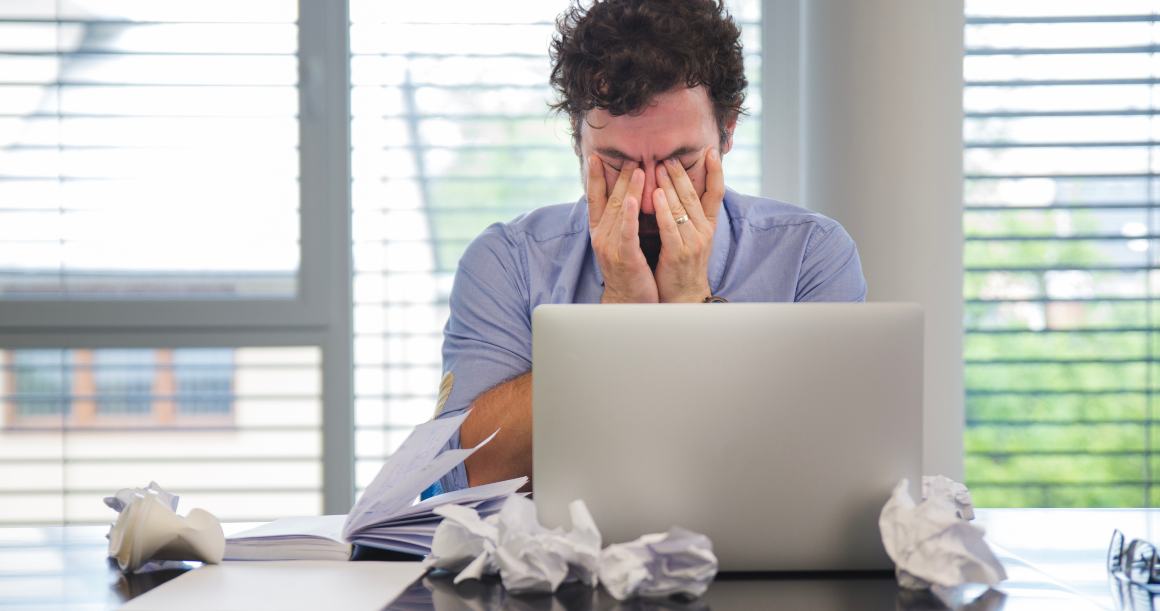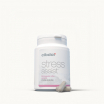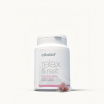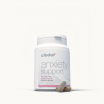Simple Ways to Quickly Relieve Stress and Anxiety
Published:
Stress is an unavoidable part of everyday life. From work deadlines to financial worries, relationships issues to health problems, there are many potential triggers that can leave you feeling stressed, anxious and overwhelmed. While long-term sources of stress need to be addressed through lifestyle changes, there are many quick and easy techniques you can use to give yourself an immediate sense of calm and relief when you’re feeling tense and anxious.
Contents:
- Why Quick Stress Relief Is Important
- Breathing Exercises
- Guided Imagery Meditation
- Progressive Muscle Relaxation
- Laugh Out Loud
- Listen to Soothing Music
- Get Moving
- Immerse Yourself in Nature
- Release Tension Through Acupressure
- Take a Quick Nap
- Write in a Journal
- Have a Nice Cup of Tea
- Get a Hand Massage
- Summary
- Frequently Asked Questions
- General Questions
- Techniques
-
Implementing a Practice
- Where are the best places to relax for 10 minutes?
- What should I do during my 10-minute breaks?
- When is the best time of day for quick relaxation practices?
- Should I set alarms to remember quick relaxation sessions?
- What if I can't go outside to immerse in nature during work?
- How can I stay motivated to actually relax and not just quickly check emails?
- Overcoming Obstacles

Why Quick Stress Relief Is Important
Feeling stressed activates your body’s natural “fight-or-flight” response, which causes physical changes like increased heart rate, tightened muscles and a rush of hormones like cortisol and adrenaline. While this reaction is useful for handling short-term danger, extended periods of stress can take a major toll on your physical and mental health.
Some potential effects of chronic stress include:
- Headache and migraines
- Muscle tension, pain and damage
- High blood pressure
- Weakened immune system
- Digestive issues like constipation or diarrhea
- Insomnia and fatigue
- Weight gain
- Skin problems like acne or eczema
- Mental health problems like depression and anxiety
- Cognitive issues like lack of focus and memory loss
When you’re stuck in stressful situations day after day, it’s easy for your body to get stuck in “fight or flight” mode as well. Quick stress relief techniques can “reset” your nervous system and induce a relaxation response to counteract the effects of stress. Think of these activities as giving your body a break so you don’t have to remain in a constant state of tension and hyperarousal.
Just 10 minutes of focused relaxation can calm your mind, slow your heart rate, relieve muscle tension, lower blood pressure and put the brakes on harmful stress hormones. This helps “turn off” the biological stress response and prevents continued damage to your physical and mental wellbeing.
While 10 minutes may not seem like a lot, short breaks to consciously relax and decompress throughout the day can add up to a significant impact. Like taking regular sips of water instead of chugging a gallon at once, quick and frequent stress relief is often more effective than waiting to dedicate a large chunk of time to relaxation.
Think of quick stress relief techniques as your emergency first aid kit for times when you need an instant calming fix. Keep reading to find simple practices you can do anytime, anywhere to give yourself a break and return to a state of balance within just a few minutes.
Breathing Exercises
Deep, mindful breathing is one of the fastest and most effective techniques for inducing immediate relaxation. When you’re stressed and anxious, your breaths become rapid and shallow, which exacerbates tension and stressful feelings. Deep breathing forces your body into a parasympathetic “rest and digest” state that counteracts the “fight or flight” response.
Try this quick 2-minute breathing exercise anytime you need to relax:
- Find a comfortable sitting position with your back straight. Close your eyes if you can.
- Place one hand on your chest and one hand on your stomach.
- Inhale slowly and deeply through your nose, feeling your stomach expand beneath your hand. The hand on your chest should remain still.
- Exhale slowly through pursed lips as if you’re blowing through a straw, feeling your stomach deflate.
- Continue inhaling and exhaling deeply for 1-2 minutes, keeping the hand on your stomach moving and the hand on your chest still.
- When you’re ready, gently open your eyes and return focus to the present moment. Notice how you feel.
This simple breathing practice forces you to take slower, deeper breaths from the diaphragm, which stimulates the vagus nerve and activates the parasympathetic nervous system. Just 2 minutes can relax tense muscles, steady your heart rate, and clear your mind. You can do this quick breathing exercise anytime, anywhere to instantly relieve stress.
Guided Imagery Meditation
Visualization techniques are another quick way to relax both your mind and body by taking a mental vacation. Guided imagery meditation involves picturing a peaceful scene in your mind and engaging all your senses to create a feeling of calm.
Follow these steps for a simple 5-minute guided imagery practice:
- Get into a comfortable seated position and close your eyes. Take a few deep breaths.
- Imagine yourself in a beautiful, peaceful setting like a beach, forest, garden, or anywhere you find relaxing. Engage your senses to make it feel real – see the vivid colors, hear the calming sounds, smell any pleasant scents, feel the warm sun or soft grass.
- Breathe deeply as you spend a few minutes exploring your inner landscape. Let any distracting thoughts float away like clouds.
- When you’re ready, gently open your eyes and take a moment to appreciate the sense of calm.
This transportive form of meditation quickly removes you from any external stressors, giving your mind a break from anxious thoughts. Regular practice can boost mood, relieve muscle tension, and promote restful sleep. Anytime you need an instant mental getaway, just close your eyes and visualize your inner happy place.
Progressive Muscle Relaxation
When you’re stressed and anxious, muscle tension is one of the most prominent physical symptoms. Practicing progressive muscle relaxation can relieve aching or tight muscles and induce relaxation quickly.
Follow these steps:
- Get comfortable lying down or seated. Close your eyes and breathe deeply.
- Starting at your feet, tightly tense the muscles for 5 seconds. Feel the tension.
- Release the tension quickly, feeling the muscles relax.
- Work your way up through muscle groups – calves, thighs, glutes, abdomen, back, hands, arms, shoulders, neck, jaw and forehead – tensing and releasing each one.
- Finish by taking a few deep breaths feeling your whole body in a relaxed state.
This simple 5-minute exercise provides an instant sense of release as your body recognizes the contrast between a tensed and relaxed muscle. The systematic tensing and releasing helps interrupt the body’s stress response.
Laugh Out Loud
Laughter really is great medicine when it comes to stress relief. A joyous laugh causes your body to release endorphins, boosts your heart rate, and stimulates circulation to give you a natural high. Even forcing yourself to smile or laugh when you don’t feel like it can lift your mood.
Try these techniques to reap the quick stress-relieving benefits of laughter:
- Call, text, or video chat a friend who always makes you laugh
- Watch a funny video, movie scene, or TV show
- Read hilarious comics, memes, or funny tweets
- Look back at old cheerful photos or memories
- Play with a pet or child
- Tell jokes or read a funny book
Just 10 minutes of laughing, chuckling, or smiling lowers stress hormones, improves your immune system, and decreases muscle tension. Keep funny books, movies, and materials on hand for when you need an instant pick-me-up.
Listen to Soothing Music
Few things are more relaxing than sitting back and listening to calming music. Peaceful instrumental music or nature sounds quickly lower stress levels and induce tranquility.
Some soothing music recommendations for quick relaxation:
- Classical – try composers like Mozart, Vivaldi, Chopin
- Ambient – artists like Brian Eno, Tycho, Land Observations
- Nature sounds – ocean waves, rainfall, forests, rivers
- New age – artists like Enya, Loreena McKennitt, Ray Lynch
- Calm piano – performers like Jim Brickman, Philip Wesley
Make playlists for different moods like unwinding after work or calming your mind before bed. Keep headphones on hand so you can enter a peaceful soundscape anytime. Just 10 minutes of serene music provides instant stress relief.
Get Moving
While exercise is excellent for relieving long-term stress, you can also get an immediate mood boost from simply moving around a bit. You don’t have to work up a big sweat or even change into workout clothes. Short bursts of physical activity quickly reduce tension, anxiety, fatigue, and angry feelings by releasing endorphins.
Try incorporating these quick stress-busting movement ideas into your day:
- Take a 10-minute walk outside
- Do yardwork like gardening or raking leaves
- Dance around while listening to music
- Do a few minutes of stretching or yoga poses
- Walk up and down stairs a few times
- Try box breathing while doing squats or lunges
- Jump rope or hula hoop for 5-10 minutes
Any type of moderate physical activity gives your mind a break from worrying thoughts while releasing feel-good endorphins that instantly lift your mood. Keep a jump rope, yoga mat, or portable speaker on hand so you can move to music anytime.
Immerse Yourself in Nature
Spending just 10 minutes surrounded by nature is an instant way to relieve stress, anxiety, and depression. Being around plants, greenery, and natural sunlight boosts energy, reduces inflammation, lowers blood pressure, and enhances overall wellbeing.
Here are quick ways to get outside for a mood boost:
- Walk barefoot in the grass
- Sit near trees, bushes, or a garden
- Stroll through a park or green space
- Sit outside listening to birdsong
- Look at the clouds, trees, or any natural scenery
- Feel the sun on your face for a couple minutes
If you can’t get outdoors, look at nature photos or videos, care for houseplants, open the window for fresh air, or diffuse essential oils like lavender, pine, or eucalyptus to feel revitalized. Just a few minutes absorbing natural sights, sounds, and smells can relieve stress.
Release Tension Through Acupressure
Acupressure is a traditional Chinese medicine technique that applies pressure to specific points on the body to reduce muscle tension, headaches, anxiety, and pain. Using your own hands, you can stimulate acupressure points for quick, drug-free stress relief anytime.
Here are two easy self-acupressure stress busters:
Wrist Point: Using your thumb, apply steady pressure between the two prominent tendons on the inside of your opposite wrist for 1-2 minutes. Repeat on the other wrist. This can ease anxiety, headaches, and neck pain.
Shoulder Point: Reach one arm across your chest to rest your opposite hand on the top of your shoulder. With your thumb, apply firm pressure at the thick, fleshy area between the base of your neck and shoulder blade for 1-2 minutes. Repeat on the other side. This releases upper back and neck tension.
Through triggering endorphins and regulating the sympathetic nervous system, stimulating these acupressure points for just 5 minutes can relieve stress and muscle tightness throughout your entire body.
Take a Quick Nap
When you’re really taxed, a short snooze of 10-20 minutes can help hit the reset button on your mind and body. Brief napping clears sluggish thinking, sharpens focus, improves alertness, and reduces fatigue caused by excessive stress and anxiety.
Keep these tips in mind for an effective power nap:
- Time it for 10-20 minutes so you don’t enter deeper sleep stages
- Find a comfy spot with little light and noise
- Set an alarm to avoid oversleeping
- Close your eyes and focus on your breathing
- When you wake up, get moving to feel energized
Limit napping to 30 minutes or less during normal waking hours. Quick daytime snoozes relieve tension without interfering with nighttime sleep quality or habits. Whenever stress leaves you feeling drained, a power nap can quickly recharge your mental and physical batteries.
Write in a Journal
Jotting down your thoughts, feelings, and concerns on paper is a quick stress relief technique. Just 5-10 minutes of writing helps organize your thoughts, identify stressors, find solutions, and track your moods over time. The physical act of writing things down releases brain activity linked to anxiety.
Make journaling part of your stress relief toolkit by:
- Keeping a notebook handy to write anytime
- Set a timer for 10 minutes to write freely and continuously
- Date your entries to track changes over time
- Writing down what stressed you and how you felt
- Making lists of current worries or problems
- Brainstorm positive solutions or reframes
- Expressing emotions through your words
Journaling is highly portable stress relief you can do anywhere. The simple act of getting worries out of your head and onto paper brings calm. You can look back on your entries to see progress in managing stress over time.
Have a Nice Cup of Tea
Sipping a hot cup of herbal tea is a soothing ritual that signals your body to relax. Herbal teas like chamomile, ginger, lavender, mint, passionflower, and lemongrass contain properties that reduce anxiety, calm nerves, and induce sleepiness. The warmth also relaxes tense muscles and calms the mind.
Follow these tips for a relaxing tea break anytime:
- Brew a fresh hot cup using loose leaves or tea bags
- Add calming herbs like lavender, chamomile, passionflower
- Inhale the aromatic steam before sipping
- Focus on enjoying the warmth, flavors, and scents
- Sweeten just a little with honey if desired
- Sip slowly without distractions
- Pair with calm music or nature sounds
Enjoying a warm cup of herbal tea tells your brain and body to take a break and relax. The flavors, scents, warmth, herbs, and ritual all promote an immediate sense of tranquility that relieves stress fast.
Get a Hand Massage
Kneading tense muscles helps the body release compounds that reduce pain and stress while promoting relaxation. While a professional massage is ideal, simply massaging your own hands for a few minutes can also quickly induce calm by stimulating pressure points.
Follow these self-hand massage steps:
- Rub your hands together briskly to warm them up.
- Using your thumb and fingers, gently squeeze and knead the fleshy area at the base of your thumb.
- Gently pull each finger outwards, applying firm pressure along the bones.
- Use your thumbs to apply circular pressure to the palm and any tense areas.
- Massage the webbing between your thumbs and index fingers.
- Gently rub your wrists.
- Repeat the kneading and circular motions for 5 minutes per hand.
You carry a lot of tension in your hands which quickly builds up as you clench them when stressed. Just 10 minutes massaging your own hands melts away tightness, improves circulation, and induces serotonin release for instant calm.
Summary
When daily stressors leave you feeling tense and overwhelmed, taking a quick 10-minute break to consciously relax can make a big difference in resetting your mind and body. Simple practices like deep breathing, guided imagery, muscle relaxation, laughter therapy, calming music, brief exercise, nature immersion, acupressure, short naps, journaling, herbal tea, and hand massage force your body to “turn off” the stressful fight-or-flight response and induce feelings of calm.
Having go-to stress relief tools that work in just 10 minutes or less is essential for preventing the unhealthy impacts of chronic anxiety and worrying. By pressing pause on your day to engage in mindfulness, movement, laughter, sensory experiences, and comforting rituals, you give your mind and body an instant recess from tension. Keep practicing quick techniques like focused breathing, nature time, soothing music, and self-massages to remain resilient in the face of day-to-day stressors. Just a few minutes of conscious relaxation makes a world of difference.
Frequently Asked Questions
General Questions
Why are quick stress relief techniques important?
Extended periods of stress can damage your physical and mental health. Taking just 10 minutes for relaxation helps reset your nervous system to counteract the effects of chronic stress and anxiety. Quick stress busters induce a sense of calm to give your body a break from continuous “fight or flight” mode.
When should I use quick stress relief practices?
Anytime you feel tense, anxious, overwhelmed or need a break, take 10 minutes for a simple stress-busting activity. Good times to reset are first thing in the morning, during work breaks, before meetings or tasks, and to unwind at day’s end.
What are the benefits of taking short breaks to relax?
Benefits include lowered blood pressure, heart rate and stress hormones, released muscle tension, increased endorphins, improved focus and performance, enhanced immune system, and better sleep. Even mini breaks add up to improved wellbeing.
How long and how often should I relax to relieve stress?
Aim for quick 5-10 minute breaks throughout the day. Stopping to consciously relax 1-3 times daily can restore calm, energy and mental clarity. Waiting too long between breaks allows tension to accumulate.
Techniques
What are some examples of fast stress relief techniques?
Deep breathing, visualization, progressive muscle relaxation, laughter therapy, calming music, brief exercise, nature immersion, acupressure, short naps, journaling, herbal tea, aromatherapy, and self-massage are examples of easy stressbusters than can work in 10 minutes or less.
Which stress relief method works fastest?
For most people, deep breathing is the fastest way to induce the relaxation response and relieve tension. Just two minutes of mindful breathing stimulates the parasympathetic system to counteract “fight or flight”. It’s an easy go-to anytime.
How can I make relaxation a habit?
Schedule short breaks on your calendar, set phone alarms for reminders, post signs with calming quotes as visual cues, keep props like journals or headphones accessible, practice first thing in the morning, and chat with supportive friends about the benefits to stay motivated.
What’s a quick stress relief tip for the office?
Step away from your desk for a few minutes to do deep breathing, listen to calming music with headphones, take a short walk, drink herbal tea, laugh with a coworker, or visualize a peaceful scene. Even mini breaks boost energy and focus.
How can I reduce stress at home?
Light a scented candle, tidy and declutter for 10 minutes, call a friend, meditate, stretch while watching TV, take a tech/news break, enjoy a cup of tea on the patio, play with pets, put on music and dance, or read an uplifting book.
Implementing a Practice
Where are the best places to relax for 10 minutes?
Any quiet, peaceful spot will do - step outside, sit in your car, find an empty room, go to a park, etc. If unavailable, relax mindfully even in a noisy environment by closing your eyes and blocking out stimuli.
What should I do during my 10-minute breaks?
Follow one relaxation practice like deep breathing, nature immersion, guided imagery, etc. Resist checking devices or social media during breaks—avoid stimuli and consciously shift your focus to your senses and the present moment.
When is the best time of day for quick relaxation practices?
Anytime of day is great for mini breaks. First thing in the morning and mid-afternoon are key times as stress hormones peak upon waking and after lunch. Before bed helps ensure restful sleep.
Should I set alarms to remember quick relaxation sessions?
Yes, using a phone, computer, or handheld timer to remind yourself takes the effort out of remembering and makes taking regular timeouts a consistent habit. Build in accountability.
What if I can't go outside to immerse in nature during work?
Sitting near windows, playing natural sounds, viewing landscape photos, tending to plants, stepping outside briefly, and visualizing nature scenes can provide quick stress relief benefits even if you can't be fully outdoors.
How can I stay motivated to actually relax and not just quickly check emails?
Note how much better you feel after relaxing to build motivation. Set intentions like doing nothing but breathing for 2 full minutes. Enlist friends to join and practice together. Consider it as important as work tasks.
Overcoming Obstacles
I feel too busy and can't spare 10 minutes - what should I do?
Remember that taking small breaks will actually boost your productivity - you'll concentrate better after relaxing. Schedule short breaks into your day like appointments. Just like eating, make relaxation non-negotiable.
What if relaxation techniques seem ineffective for me?
Keep trying different methods to find what works best, like visualized nature, soothing music, laughter therapy or brief naps. Tackle any roadblocks like tension thinking about work. Remind yourself of the health benefits.
How can I stay relaxed after my short break ends?
Ease back into work to maintain a sense of calm. Set a reminder to take another break soon. Sip some tea or diffuse oils at your desk. Listen to music while you work. Move mindfully through your day.
What if my job doesn't permit taking breaks to relax?
Even a quick 2-minute breathing or stretching break in the bathroom can relax you. Speak with your employer about the productivity benefits of short breaks for stress management. Politely advocate for your needs.
Are quick stress relief practices effective long-term?
While intended for immediate relief, consistently taking short breaks to relax throughout the day prevents stress build up and trains your mind to remain calmer overall. The benefits accumulate.


















